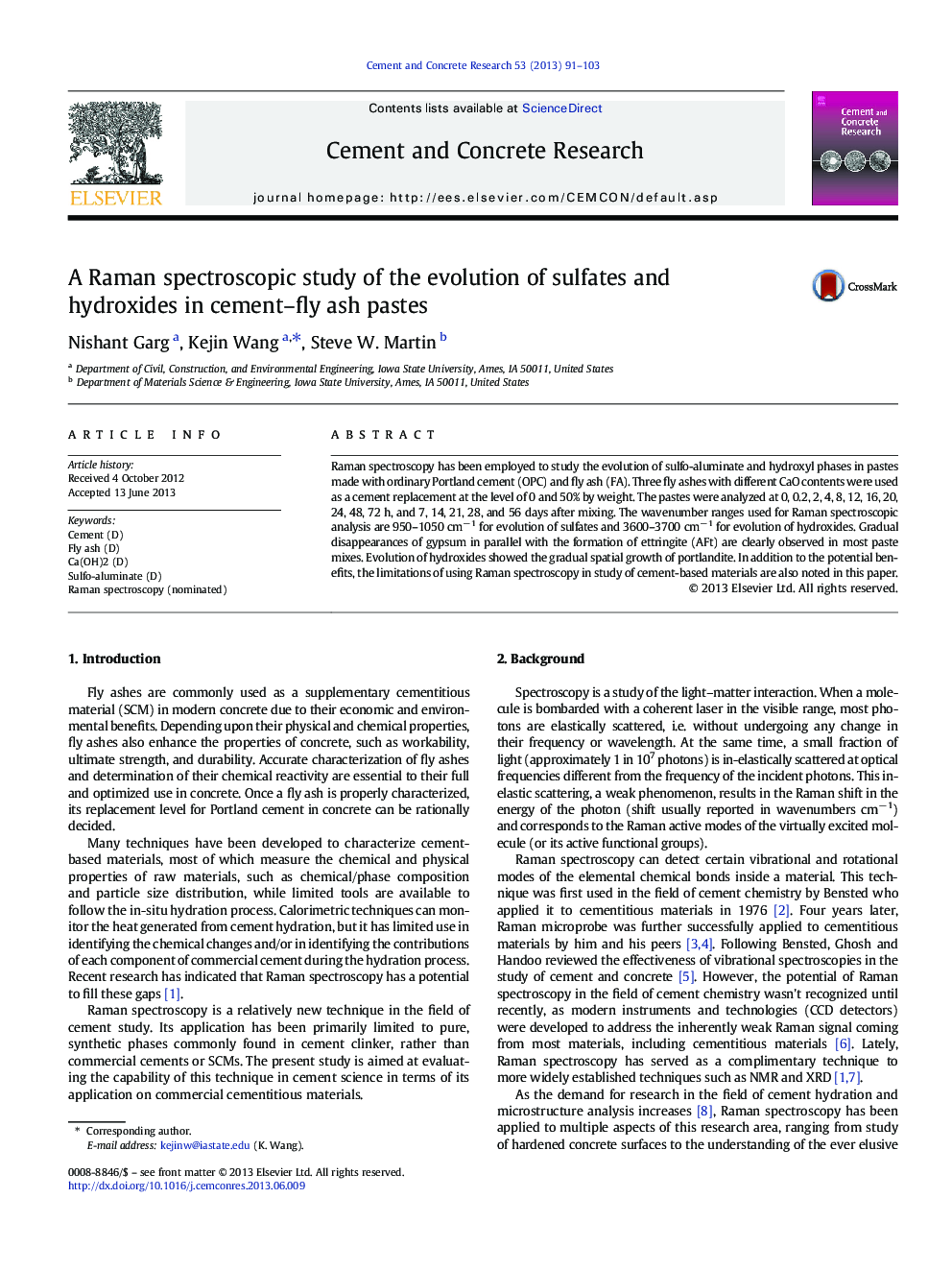| کد مقاله | کد نشریه | سال انتشار | مقاله انگلیسی | نسخه تمام متن |
|---|---|---|---|---|
| 1456414 | 1509768 | 2013 | 13 صفحه PDF | دانلود رایگان |

• Raman spectroscopy characterizes raw cementitious materials effectively.
• Raman spectroscopy clearly illustrates gypsum depletion and ettringite formation.
• Raman spectroscopy is able to map Ca(OH)2 concentration and distribution with time.Raman spectroscopy is a simple technique for in-situ evaluation of cement hydration.
Raman spectroscopy has been employed to study the evolution of sulfo-aluminate and hydroxyl phases in pastes made with ordinary Portland cement (OPC) and fly ash (FA). Three fly ashes with different CaO contents were used as a cement replacement at the level of 0 and 50% by weight. The pastes were analyzed at 0, 0.2, 2, 4, 8, 12, 16, 20, 24, 48, 72 h, and 7, 14, 21, 28, and 56 days after mixing. The wavenumber ranges used for Raman spectroscopic analysis are 950–1050 cm− 1 for evolution of sulfates and 3600–3700 cm− 1 for evolution of hydroxides. Gradual disappearances of gypsum in parallel with the formation of ettringite (AFt) are clearly observed in most paste mixes. Evolution of hydroxides showed the gradual spatial growth of portlandite. In addition to the potential benefits, the limitations of using Raman spectroscopy in study of cement-based materials are also noted in this paper.
Journal: Cement and Concrete Research - Volume 53, November 2013, Pages 91–103